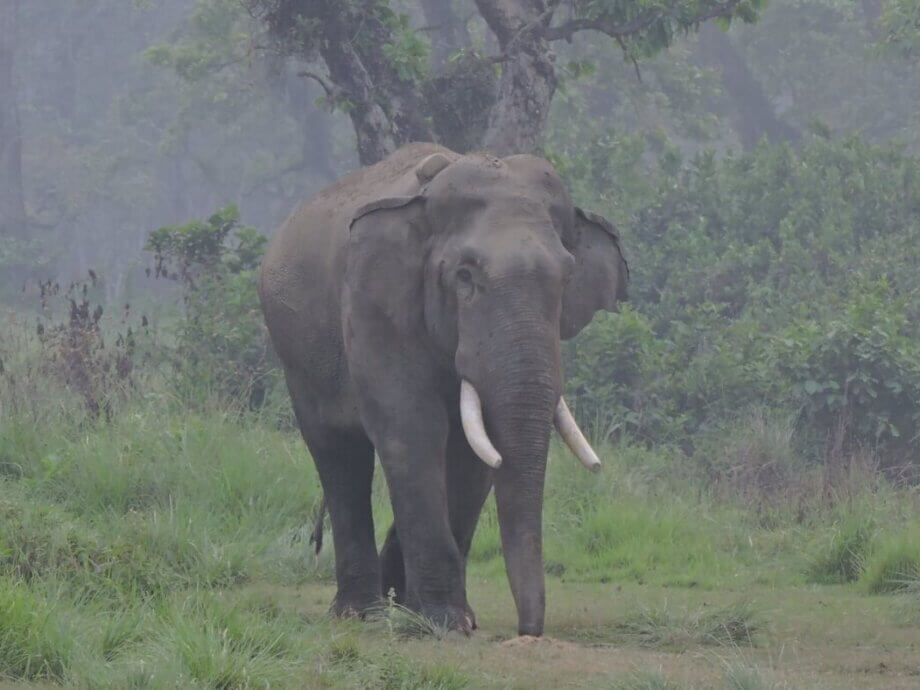Introduction: A Crisis in Bahundangi
In the early hours of June 10, 2024, a herd of approximately 20 wild elephants entered Shantitole, a settlement in Bahundangi, Jhapa district, Nepal. By dawn, local families awoke to find their maize fields devastated, crops trampled, and livelihoods in jeopardy. This incident, while dramatic, is far from isolated. Bahundangi and the broader Jhapa region have become epicenters of human-elephant conflict, with increasing frequency and severity of elephant raids threatening both human and elephant populations.
- Introduction: A Crisis in Bahundangi
- Why Are Elephant Raids Increasing?
- The Human Toll: Livelihoods, Safety, and Anxiety
- Elephants Under Threat: Retaliation and Poaching
- Failed Deterrents and the Promise—and Problems—of Solar Fencing
- Government Response: Promises and Challenges
- Cross-Border Complications: The India-Nepal Dimension
- Innovative Solutions: Toward Coexistence
- Broader Lessons and the Path Forward
- In Summary
Why Are Elephant Raids Increasing?
The escalation of elephant raids in Jhapa is rooted in a complex interplay of environmental, social, and economic factors. Historically, wild Asian elephants (Elephas maximus) migrated freely across the forests and floodplains of Nepal and India, following ancient corridors in search of food and water. However, over the past several decades, rapid human population growth, agricultural expansion, and infrastructure development have dramatically altered these landscapes.
As forests have receded and been fragmented by roads, settlements, and farms, elephants have lost much of their natural habitat and food sources. According to scientific studies, the eastern Terai region of Nepal, where Jhapa is located, is now a hotspot for human-elephant conflict due to its patchwork of small protected areas, agricultural fields, and settlements. Migratory herds from India, especially during the dry season, are increasingly forced to enter human-dominated areas in search of sustenance.
Research from other Asian regions, such as Thailand, confirms that land use changes and habitat loss are primary drivers of crop raiding by elephants. As suitable habitat shrinks, elephants are drawn to agricultural areas where crops like maize, rice, and sugarcane offer easy, high-calorie food. This pattern is mirrored in Jhapa, where the expansion of maize and paddy cultivation has made villages like Bahundangi attractive targets for hungry herds.
The Human Toll: Livelihoods, Safety, and Anxiety
The impact of elephant raids on local communities is profound. Farmers like Sita Sunar, who lost her entire maize crop just before harvest, face not only immediate food shortages but also the loss of a year’s income and hard labor. The destruction extends beyond crops to include houses, granaries, and even lives. In the past decade, at least 58 people have died and 79 have been injured in elephant attacks in Jhapa district alone. The psychological toll is equally severe, with many residents enduring sleepless nights, constant anxiety, and the ever-present fear of the next raid.
Compensation mechanisms exist for those affected by wildlife damage, but bureaucratic hurdles often prevent the most vulnerable—such as tenant farmers without land ownership documents—from accessing relief. The process can take months, and many, like Sita, do not even apply, resigned to bearing the losses themselves.
Elephants Under Threat: Retaliation and Poaching
While humans suffer from crop loss and property damage, elephants themselves face increasing dangers. Retaliatory actions by villagers, including the use of electric fences, firecrackers, and even firearms, have led to the deaths of numerous elephants. In the last decade, at least 16 elephants have been killed in Jhapa, with causes ranging from electrocution to poaching for tusks and tail hair, which fetch high prices on the black market.
Recent reports highlight a worrying trend: the use of guns and muskets in poaching elephants, often by organized cross-border groups. Conservationists warn that such killings, combined with habitat loss, threaten the survival of Nepal’s already small wild elephant population, estimated at around 200-227 individuals.
Failed Deterrents and the Promise—and Problems—of Solar Fencing
Communities in Bahundangi and surrounding areas have experimented with a variety of methods to deter elephants, including:
- Beekeeping, based on the idea that buzzing bees repel elephants
- Ropes coated with chili powder
- Planting “Hatti bar” trees believed to discourage elephant entry
- Digging trenches around fields
However, none of these approaches have provided a lasting solution. The most effective intervention to date has been the installation of solar-powered electric fencing along the border. When fully operational, these fences reduced elephant intrusions by up to 98%, offering a rare respite for local farmers.
Yet, the success of solar fencing has been undermined by poor maintenance, deliberate vandalism (often to create illegal routes for smuggling riverbed materials), and the remarkable intelligence of elephants, who have learned to breach or circumvent barriers. As a result, many sections of the fence have fallen into disrepair, and the frequency of raids has surged once again.
Government Response: Promises and Challenges
Local and provincial authorities acknowledge the severity of the crisis. The Division Forest Office in Jhapa has allocated nearly one million Nepali rupees for solar fence maintenance in the 2024-25 fiscal year, and the municipality is preparing to set aside additional funds for urgent repairs. However, officials admit that without sustained commitment and cooperation across all levels of government, as well as community buy-in, these efforts may fall short.
Agni Prasad Adhikari, chief administrative officer of Mechinagar Municipality, emphasizes the need for a coordinated response:
“We’ve held several rounds of discussions within the municipality and with security agencies and the District Administration Office. There’s consensus that repairing the solar fence is a priority.”
Despite these assurances, many residents remain skeptical, citing past delays and the ongoing vulnerability of their homes and fields.
Cross-Border Complications: The India-Nepal Dimension
The human-elephant conflict in Jhapa cannot be understood in isolation from its cross-border context. Elephants routinely migrate between Nepal and the Indian states of West Bengal and Assam, following traditional corridors that predate modern political boundaries. The erection of solar-powered fences on the Nepal side of the Mechi river has disrupted these migratory routes, with unintended consequences for both countries.
On the Indian side, communities in north Bengal report increased crop raids and human fatalities as elephants, blocked from entering Nepal, are forced to remain in Indian villages. Experts argue that while fencing may offer short-term relief for Nepali farmers, it simply shifts the problem across the border, exacerbating conflict elsewhere. This has led to calls for a “landscape approach” to conservation, emphasizing transboundary cooperation, habitat connectivity, and the creation of safe corridors for elephant movement.
Innovative Solutions: Toward Coexistence
Despite the daunting challenges, Bahundangi offers a glimmer of hope through innovative coexistence strategies. Over the past decade, local leaders and conservationists have promoted a shift from traditional crops like maize and rice—favorites of elephants—to alternatives such as tea, bay leaves, and lemons, which elephants tend to avoid. This transition has not only reduced crop losses but also diversified and stabilized farmers’ incomes.
Beekeeping has emerged as another effective deterrent, with mustard cultivation supporting bee populations and providing additional revenue streams. Community-based rapid response teams, trained by NGOs, now patrol villages during peak conflict seasons, guiding elephants away from residential areas and minimizing dangerous encounters.
Crucially, attitudes toward elephants have evolved. Many villagers now recognize that aggressive attempts to chase away elephants often provoke retaliation, while passive coexistence—staying indoors and applying for compensation after a raid—can reduce the risk of injury or death. As one local farmer put it:
“We no longer fear elephants nor are we angry at them. When they come, we stay inside. If we don’t disturb them, they walk their path. If we shout, they create trouble.”
These changes, supported by streamlined compensation processes and community education, have contributed to a significant decline in fatalities in Bahundangi since 2015.
Broader Lessons and the Path Forward
The experience of Bahundangi underscores several key lessons for managing human-elephant conflict:
- Habitat Restoration and Connectivity: Long-term solutions require restoring and protecting elephant habitats, maintaining migratory corridors, and minimizing further fragmentation by development projects.
- Community Engagement: Empowering local communities through education, alternative livelihoods, and participatory decision-making is essential for sustainable coexistence.
- Transboundary Cooperation: Given the cross-border nature of elephant movements, Nepal and India must collaborate on joint conservation strategies, data sharing, and coordinated responses to conflict.
- Adaptive Management: No single intervention—be it fencing, compensation, or crop switching—can solve the problem alone. A flexible, integrated approach that combines multiple strategies and adapts to changing circumstances is needed.
Experts warn that without decisive action, both humans and elephants will continue to suffer. The loss of even a few elephants each year is a significant blow to Nepal’s endangered population, while ongoing raids threaten the food security and well-being of thousands of families.
In Summary
- Human-elephant conflict in Jhapa, Nepal, has intensified due to habitat loss, agricultural expansion, and disrupted migratory routes.
- Both humans and elephants suffer: dozens of people and elephants have died in recent years, with significant property and crop losses.
- Solar-powered electric fencing has proven effective but requires sustained maintenance and community cooperation.
- Retaliatory killings and poaching, including the use of firearms, pose a grave threat to Nepal’s small wild elephant population.
- Innovative coexistence strategies—such as crop switching, beekeeping, and rapid response teams—have reduced conflict in Bahundangi and offer a model for other regions.
- Transboundary cooperation between Nepal and India is essential for long-term solutions, as elephant movements and conflicts do not respect political borders.
- Integrated, adaptive management that balances human needs with wildlife conservation is the only sustainable path forward.












